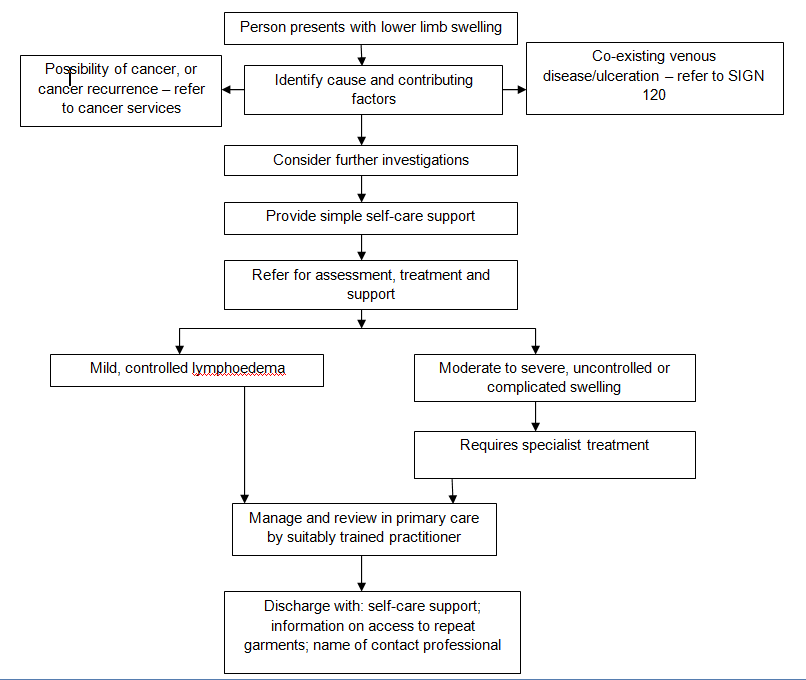Possible presenting signs and symptoms:
Lymphoedema may be unilateral or bilateral depending on the cause/s
- Early stage:
- Mild and/or intermittent swelling affecting one or more: foot, toes, ankle, lower or upper limb/s, genitals and/or trunk, buttocks, abdomen
- Later stage:
- Persistent and/or worsening swelling
- Positive Stemmer’s sign (inability to pinch the base of the second toe due to tissue fibrosis)
- Shape changes and skin folds
- Tendency to cellulitis: see cellulitis pathway
- Skin and tissue changes may include:
- fibrosis (firm, sometimes non-pitting )
- ulceration/fragile skin that breaks easily
- hyperkeratosis (scaly areas)
- papillomatosis (cobblestone skin)
- lymphangiectasia (blister-like protrusion of lymphatics that may leak clear fluid)
- deposition of fat tissue
- lipodermatosclerosis leading to hard indurated tissues
- lymphorrhea (leaking of lymph from the skin)
See Lymphoedema Diagnosis, Treatment and Care 'useful photographs'
Additional information
Stages of lymphoedema defined by the International Society of Lymphology (2013) indicates that lymphoedema is a progressive condition:
| Stage 0 | sub-clinical changes with no obvious clinical signs |
| Stage 1 | mild swelling that may reduce on elevation/overnight |
| Stage 2 | moderate swelling that becomes persistent |
| Stage 3 | persistent swelling with skin/tissue changes/complications |

